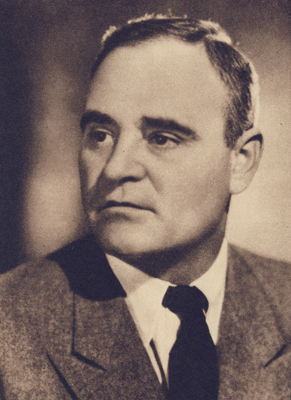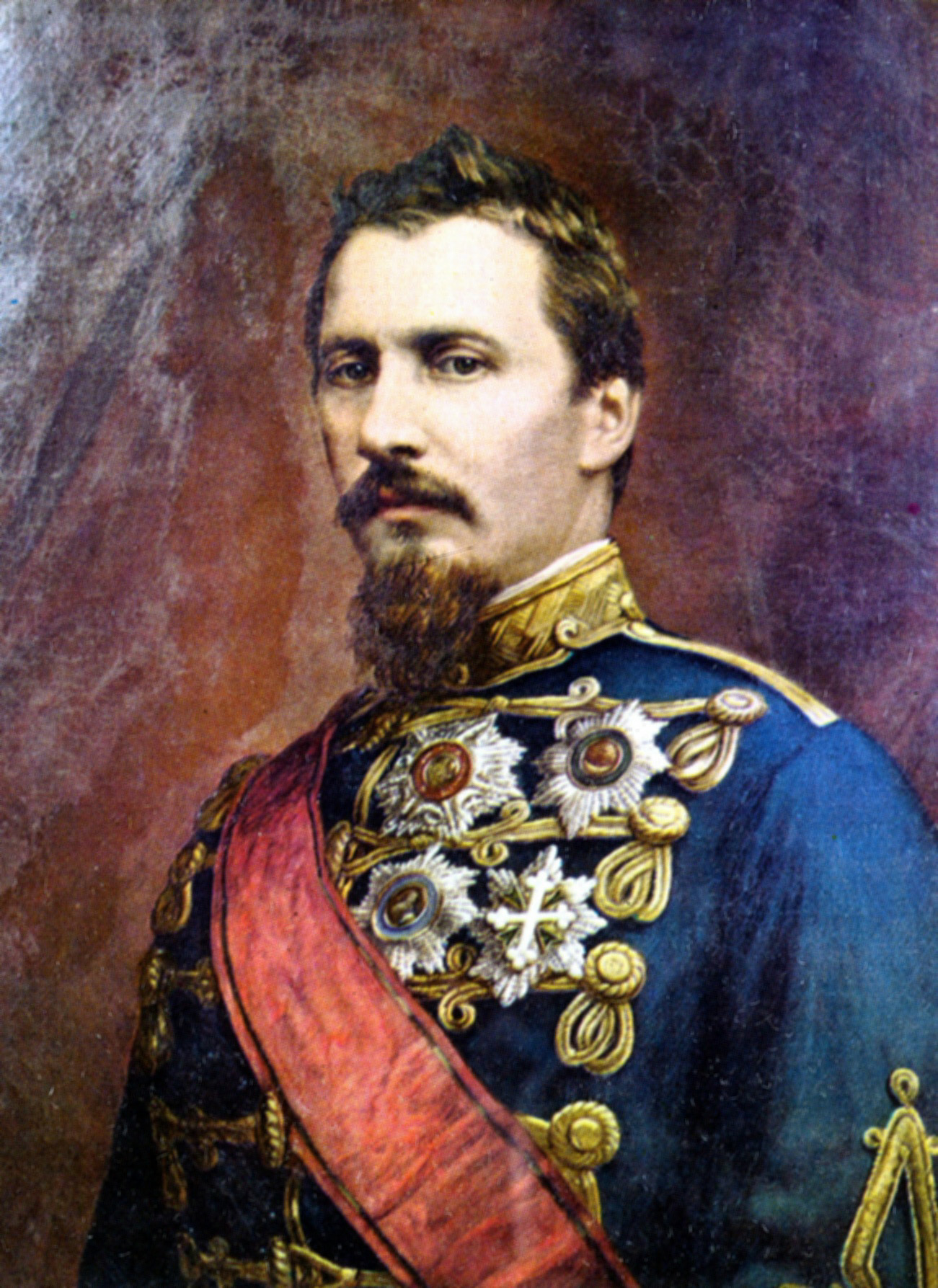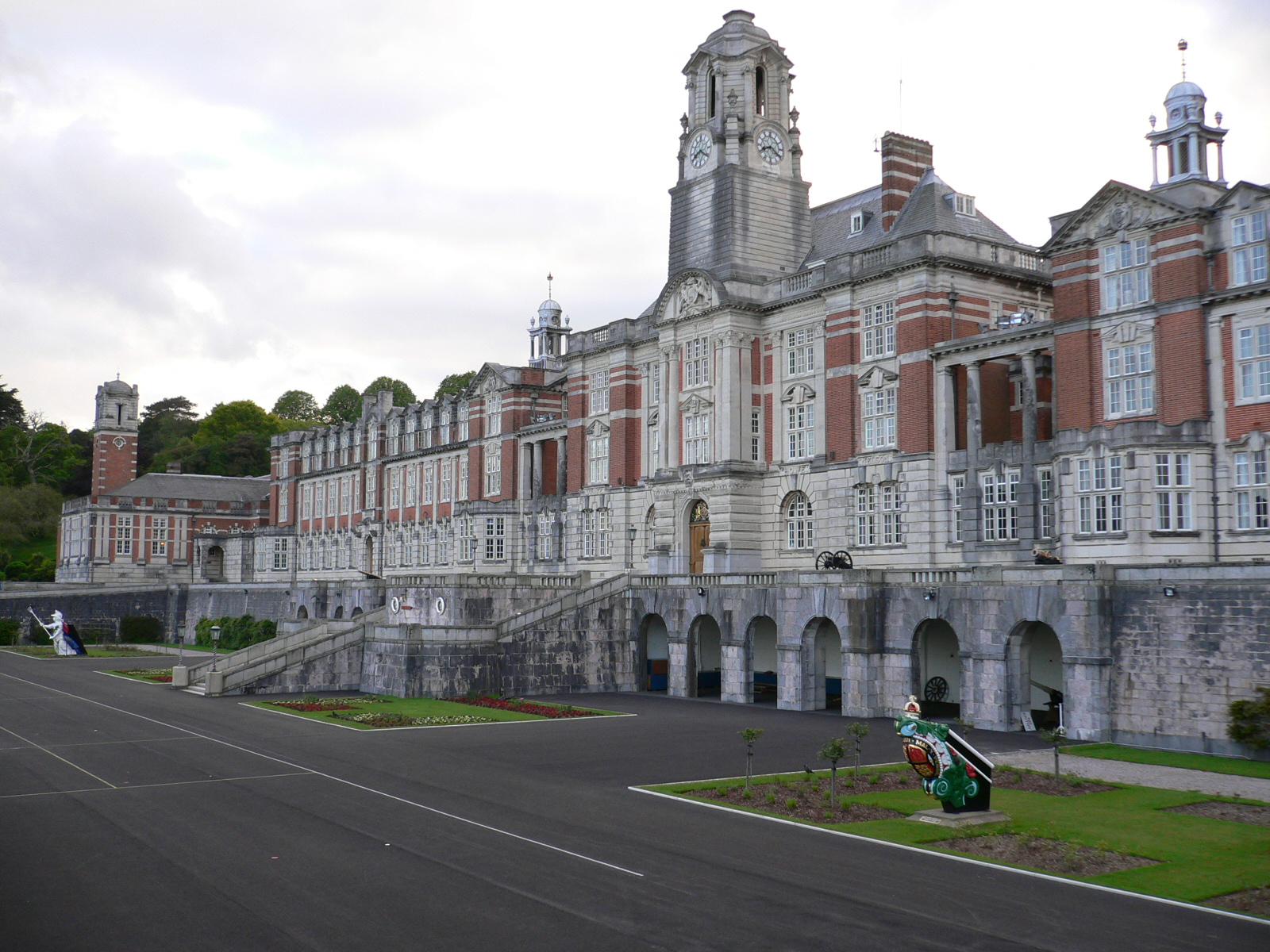|
Emil Bodnăraș
Emil Bodnăraș (10 February 1904 – 24 January 1976) was a Romanian Romanian Communist Party, communist politician, an army officer (armed forces), officer, and a Soviet Union, Soviet Espionage, agent, who had considerable influence in the Socialist Republic of Romania, Romanian People's Republic.''Final Report'', p. 646 Early life Bodnăraș was born to a Ukrainians, Ukrainian father and a Bukovina Germans, German mother in 1904, in Iaslovăț, Suceava County, Bukovina, then under Austria-Hungarian Empire, Austro-Hungarian rule. While studying law at the Alexandru Ioan Cuza University, University of Iași, he joined the far-right National Romanian Fascio, and later, in 1924, the National Christian Defense League, led by A. C. Cuza. He was expelled from the University and enrolled in the Timișoara military school, graduating in 1930 as the top of his class. His career as an artillery officer in the Romanian army was interrupted by a conflict with a member of the Romanian Ro ... [...More Info...] [...Related Items...] OR: [Wikipedia] [Google] [Baidu] |
State Council Of Romania
The State Council () was the executive authority of Communist Romania from 1961 to 1989. It was the collective head of state before the creation of the office of President in 1974. Powers 1961–1974 The State Council was created in 1961 with an amendment to the 1952 Constitution, replacing the Presidium of the Great National Assembly. It consisted of a president, three vice presidents and thirteen members. By the end of the Communist era, it comprised a president, four vice presidents, a secretary and 15 members. According to Article 63 of the 1965 Constitution, the State Council was " the supreme organ of state power (i. e., the GNA) in permanent session." It was elected by the GNA from among its members and held office for the GNA's duration—in practice, five years. As with all government bodies in Romania, it was nominally subordinate to the GNA. In practice, by 1989, all but two of its members were also members of the Central Committee of the Romanian Communist ... [...More Info...] [...Related Items...] OR: [Wikipedia] [Google] [Baidu] |
Romanian Communist Party
The Romanian Communist Party ( ; PCR) was a communist party in Romania. The successor to the pro-Bolshevik wing of the Socialist Party of Romania, it gave an ideological endorsement to a communist revolution that would replace the social system of the Kingdom of Romania. After being outlawed in 1924, the PCR remained a minor and illegal grouping for much of the interwar period and submitted to direct Comintern control. During the 1920s and the 1930s, most of its activists were imprisoned or took refuge in the Soviet Union, which led to the creation of competing factions that sometimes came into open conflict. That did not prevent the party from participating in the political life of the country through various front organizations, most notably the Peasant Workers' Bloc. In 1934–1936, PCR reformed itself in the mainland of Romania properly, with foreign observers predicting a possible communist takeover in Romania. The party emerged as a powerful actor on the Romanian political ... [...More Info...] [...Related Items...] OR: [Wikipedia] [Google] [Baidu] |
Alexandru Ioan Cuza University
The Alexandru Ioan Cuza University (; acronym: UAIC) is a public university located in , Romania. Founded by an 1860 decree of Prince Alexandru Ioan Cuza, under whom the former was converted to a university, the University of , as it was named at first, is one of the oldest universities of Romania, and one of its advanced research and education institutions. It is one of the five members of the ''Universitaria Consortium'' (the group of elite Romanian universities). The Alexandru Ioan Cuza University offers study programmes in Romanian, English, and French. In 2008, for the third year in a row, it was placed first in the national research ranking compiled on the basis of Shanghai criteria. The university is a member of some of the most important university networks and associations: the Coimbra Group (CG), Utrecht Network, European University Association (EUA), International Association of Universities (IAU), Agence universitaire de la Francophonie, University Agency of Franco ... [...More Info...] [...Related Items...] OR: [Wikipedia] [Google] [Baidu] |
Austria-Hungarian Empire
Austria-Hungary, also referred to as the Austro-Hungarian Empire, the Dual Monarchy or the Habsburg Monarchy, was a multi-national constitutional monarchy in Central Europe#Before World War I, Central Europe between 1867 and 1918. A military and diplomatic alliance, it consisted of two sovereign states with a single monarch who was titled both the Emperor of Austria and the King of Hungary. Austria-Hungary constituted the last phase in the constitutional evolution of the Habsburg monarchy: it was formed with the Austro-Hungarian Compromise of 1867 in the aftermath of the Austro-Prussian War, following wars of independence by Hungary in opposition to Habsburg rule. It was dissolved shortly after Dissolution of Austria-Hungary#Dissolution, Hungary terminated the union with Austria in 1918 at the end of World War 1. One of Europe's major powers, Austria-Hungary was geographically the second-largest country in Europe (after Russian Empire, Russia) and the third-most populous (afte ... [...More Info...] [...Related Items...] OR: [Wikipedia] [Google] [Baidu] |
Bukovina
Bukovina or ; ; ; ; , ; see also other languages. is a historical region at the crossroads of Central and Eastern Europe. It is located on the northern slopes of the central Eastern Carpathians and the adjoining plains, today divided between Romania and Ukraine. Inhabited by many cultures and peoples, settled by both Ukrainians ( Ruthenians) and Romanians (Moldavians), it became part of the Kievan Rus' and Pechenegs' territory early on during the 10th century and an integral part of the Principality of Moldavia in the 14th century where the capital of Moldavia, Suceava, was founded, eventually expanding its territory all the way to the Black Sea. Consequently, the culture of the Kievan Rus' spread in the region during the early Middle Ages. During the time of the Golden Horde, namely in the 14th century (or in the High Middle Ages), Bukovina became part of Moldavia under Hungarian suzerainty (i.e. under the medieval Kingdom of Hungary). According to the Moldo-Russian Ch ... [...More Info...] [...Related Items...] OR: [Wikipedia] [Google] [Baidu] |
Bukovina Germans
The Bukovina Germans ( or ''Buchenlanddeutsche'', ), also known and referred to as Buchenland Germans, or Bukovinian Germans, are a German diaspora, German Ethnicity, ethnic group which settled in Bukovina, a historical region situated at the crossroads of Central Europe, Central and Eastern Europe, during the Modern era, modern period. They are part of the larger group of Germans of Romania, Romanian Germans (, ) since the early 20th century, when they were initially living in the Kingdom of Romania (, ). Their main demographic presence lasted from the last quarter of the 18th century, when Bukovina was Treaty of Küçük Kaynarca, annexed by the Habsburg monarchy, Habsburg Empire, until 1940, when nearly all Bukovina Germans (or approximately 100,000 people) were forcefully resettled into either Nazi Germany or Nazi-occupied regions in Central-Eastern Europe as a part of the ''Heim ins Reich'' Nazism, national socialist population transfer policy. Nowadays, most of the Bukovina ... [...More Info...] [...Related Items...] OR: [Wikipedia] [Google] [Baidu] |
Ukrainians
Ukrainians (, ) are an East Slavs, East Slavic ethnic group native to Ukraine. Their native tongue is Ukrainian language, Ukrainian, and the majority adhere to Eastern Orthodox Church, Eastern Orthodoxy, forming the List of contemporary ethnic groups, second largest ethno-linguistic community. At around 46 million worldwide, Ukrainians are the second largest Slavs, Slavic ethnic group after Russians. Ukrainians have been Endonym and exonym, given various names by foreign rulers, which have included Polish–Lithuanian Commonwealth, the Habsburg monarchy, the Austrian Empire, and then Austria-Hungary. The East Slavic population inhabiting the territories of modern-day Ukraine were known as Ruthenians, referring to the territory of Ruthenia; the Ukrainians living under the Russian Empire were known as Little Russians, named after the territory of Little Russia. The ethnonym Ukrainian, which was associated with the Cossack Hetmanate, was adopted following the Ukrainian natio ... [...More Info...] [...Related Items...] OR: [Wikipedia] [Google] [Baidu] |
Espionage
Espionage, spying, or intelligence gathering, as a subfield of the intelligence field, is the act of obtaining secret or confidential information ( intelligence). A person who commits espionage on a mission-specific contract is called an ''espionage agent'' or ''spy''. A person who commits espionage as a fully employed officer of a government is called an intelligence officer. Any individual or spy ring (a cooperating group of spies), in the service of a government, company, criminal organization, or independent operation, can commit espionage. The practice is clandestine, as it is by definition unwelcome. In some circumstances, it may be a legal tool of law enforcement and in others, it may be illegal and punishable by law. Espionage is often part of an institutional effort by a government or commercial concern. However, the term tends to be associated with state spying on potential or actual enemies for military purposes. Spying involving corporations is known as c ... [...More Info...] [...Related Items...] OR: [Wikipedia] [Google] [Baidu] |
Soviet Union
The Union of Soviet Socialist Republics. (USSR), commonly known as the Soviet Union, was a List of former transcontinental countries#Since 1700, transcontinental country that spanned much of Eurasia from 1922 until Dissolution of the Soviet Union, it dissolved in 1991. During its existence, it was the list of countries and dependencies by area, largest country by area, extending across Time in Russia, eleven time zones and sharing Geography of the Soviet Union#Borders and neighbors, borders with twelve countries, and the List of countries and dependencies by population, third-most populous country. An overall successor to the Russian Empire, it was nominally organized as a federal union of Republics of the Soviet Union, national republics, the largest and most populous of which was the Russian SFSR. In practice, Government of the Soviet Union, its government and Economy of the Soviet Union, economy were Soviet-type economic planning, highly centralized. As a one-party state go ... [...More Info...] [...Related Items...] OR: [Wikipedia] [Google] [Baidu] |
Officer (armed Forces)
An officer is a person who holds a position of authority as a member of an Military, armed force or Uniformed services, uniformed service. Broadly speaking, "officer" means a commissioned officer, a non-commissioned officer (NCO), or a warrant officer. However, absent contextual qualification, the term typically refers only to a force's ''commissioned officers'', the more senior members who derive their authority from a Commission (document), commission from the head of state. Numbers The proportion of officers varies greatly. Commissioned officers typically make up between an eighth and a fifth of modern armed forces personnel. In 2013, officers were the senior 17% of the British armed forces, and the senior 13.7% of the French armed forces. In 2012, officers made up about 18% of the German armed forces, and about 17.2% of the United States armed forces. Historically armed forces have generally had much lower proportions of officers. During the First World War, fewer than ... [...More Info...] [...Related Items...] OR: [Wikipedia] [Google] [Baidu] |
Emil Bodnăraş 1957
{{Disambiguation ...
Emil may refer to: Literature *''Emil and the Detectives'' (1929), a children's novel *"Emil", nickname of the Kurt Maschler Award for integrated text and illustration (1982–1999) *''Emil i Lönneberga'', a series of children's novels by Astrid Lindgren People *Emil (given name), including a list of people with the given name ''Emil'' or ''Emile'' *Aquila Emil (died 2011), Papua New Guinean rugby league footballer Other *Emil (river), in China and Kazakhstan *Emil (tank), a Swedish tank developed in the 1950s *Sturer Emil, a German tank destroyer See also * * Emile (other) *Aemilius (other) *Emilio (other) *Emílio (other) *Emilios (other) Emilios, or Aimilios, (Greek: Αιμίλιος) is a variant of the given names Emil (other), Emil, Emilio (other), Emilio and Emílio (other), Emílio, and may refer to: *Aimilios Veakis, Greek actor *Aimilios Papathanas ... [...More Info...] [...Related Items...] OR: [Wikipedia] [Google] [Baidu] |
Hungarian Revolution Of 1956
The Hungarian Revolution of 1956 (23 October – 4 November 1956; ), also known as the Hungarian Uprising, was an attempted countrywide revolution against the government of the Hungarian People's Republic (1949–1989) and the policies caused by the government's subordination to the Soviet Union (USSR). The uprising lasted 15 days before being crushed by Soviet tanks and troops on 7 November 1956 (outside of Budapest firefights lasted until at least 12 November 1956).Granville, Johanna. The First Domino: International Decision Making During the Hungarian Crisis of 1956, pp. 94-195. Thousands were killed or wounded, and nearly a quarter of a million Hungarians fled the country. The Hungarian Revolution began on 23 October 1956 in Budapest when university students appealed to the civil populace to join them at the Hungarian Parliament Building to protest against the USSR's geopolitical domination of Hungary through the Stalinist government of Mátyás Rákosi. A delegation of s ... [...More Info...] [...Related Items...] OR: [Wikipedia] [Google] [Baidu] |





